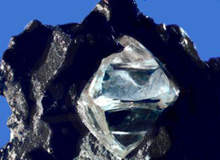
How much do you know about your employees? Today, internal workers are responsible for the majority of theft from mines, a crime which, according to industry heavyweights across the globe, leads to a drop in production and a huge dip in shares.
The situation hasn’t altered since 2007, when the Institute of Security Studies brought out a report on mine theft, which revealed that 73% of thieves in platinum mines and 41% in gold mines were employed by the company they were stealing from.
Just last year, African Barrick Gold (ABG) downgraded its 2010 production forecast after it suspended 40% of its workforce at the Buzwagi mine in Tanzania over suspected fuel theft. As a result, the company was forced to delay the mining of higher grade ore at Buzwagi, which led to a production decrease of around 30,000oz of gold for the full year and a 9.5% drop in shares.
The sheer remoteness of some mines acts as a natural barrier against illegal mining, but on-the-job robbery can be much more difficult to prevent. And, as mining companies continue to expand their projects to increase their production capacities, high-level security solutions will be required to protect their assets.
Identifying the risk
Jewels, gems and precious metals have tempted thieves ever since extraction first began, and as prices rise year after year, gold, silver, platinum and diamonds have only become more alluring, especially to those in close contact with them.
“The reality is, theft an issue,” says Colin Brown, global head of security at De Beers Family of Companies. “In a diamond mine it would be quite usual to have people that are stealing the diamonds from the process.”
So how, can companies stop the problem of internal mine theft once and for all? Rob McJannett, strategic business manager at Cardax Australia, a supplier of security solutions, says: “It’s all about controlling the people and movements within that environment.
“Mining companies must look into people’s backgrounds and check whether someone is allowed to enter a particular area within the mine site.”
In a gold mine, the areas at highest risk of theft are where the last stages of production take place i.e. the gold rooms, where visible, extracted gold is present. The same goes for diamond mines, where the further into the pit you go, the higher the concentrates are, says Brown: “At the end, you’ll come to about 98% pure diamonds.”
Over time, mining companies have analysed data to discover these high-risk areas and taken steps to minimise the opportunity for employees to steal.
De Beers, for example, is focusing on loss prevention. This involves examining the efficiency and the effectiveness of diamond processing. If the process is running as it should be, minimum human input is required.
Secondly, the firm delves into the motivation behind the decision to steal, and in-turn, attempts to shift people from being acquiescent to theft to actually resisting it. Brown explains: “If you look at the distribution curve of honest versus dishonest people you find that people behave in a way which is a reflection of their society, their community etc.
“What we look at, in terms of motivation, is to provide people with the training they require as individuals around security and running – in the same way that you would run a safety programme. We have put a fair bit of effort into this,” Brown adds.
Technologies
Sophisticated data and analytical tools have been introduced into mines to help barons dig for all the dirt on criminal behaviour happening on site.
South Africa’s C3 specialises in the design and implementation of intelligent security solutions, including thermal cameras, intelligent video analytics, cable theft detection, and physical perimeter barriers.
“Our clients benefit from real-time situational awareness, instant visual verification of the exact cause, and location of any potential perimeter breach threat – even in total darkness,” says C3 marketing manager Tanli Lundgren.
Technologies that were, not so long ago, deemed as modern, such as LCD and HD monitors, are quickly being replaced by biometrics ranging from iris, fingerprint and facial recognition in the access control environment.
“More sophisticated data bases and other analytic tools have been introduced in the investigation environment and this has a significant positive impact on trending and analysing crime information,” explains Gold Fields Protection Services senior manager Nash Lutchman.
Gold Fields is a precious metal producer with operations in Peru, Ghana, South Africa and Australia. Among other technologies, the company uses infra-red beams, motion sensors and thermal cameras to protect its mines.
In addition, dual-authorisation access – a system being picked up by leading mining companies – stops miners from entering ‘no alone’ zones, as Cardax Australia’s McJannett explains: “This requires two people with the same level of privileges to go into a certain area. They also have to leave together.”
Preventative approach
With so much security technology coming into play, mining companies may finally limit the risk of theft. But will these mechanical systems replace security personnel? “Yes, absolutely especially in the case of intelligent video analytics,” insists C3’s Lundgren. “It’s a well-known statistic that after just 22 minutes an operator misses 95% of scene activity.”
Lutchman also believes that there is moving emphasis with mining security from man guarding to a more “holistic” effort based on prevention and detection.
De Beers’ Brown, however, is more sceptical: “If you spend $10 million on equipment it doesn’t mean you are going to get a lift in effectiveness. What I often find is that the failure lies is in the people using the technology.”
Whatever the outcome, if mining companies are to protect their assets, they must take a preventative approach to theft.
A responsive approach to mining theft, where companies wait for their assets to be stolen before attempting to catch a culprit, could put their workers in grave danger.



